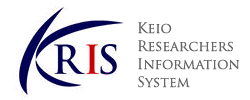-
Affiliation
-
School of Medicine, Department of Neuropsychiatry (Shinanomachi)
-
Position
-
Professor

KEIO RESEARCHERS INFORMATION SYSTEM |
Details of a Researcher
このページはJavascriptを使用しています。すべての機能を使用するためにはJavascript を有効にする必要があります。
Uchida, Hiroyuki
|
|
|
Medications for Psychosis: Dopamine Blockers and Dopamine Partial Agonists (Antipsychotics)
Kim E., Jarskog L.F., Fleischhacker W.W., Remington G., Lieberman J.A., Uchida H., Tasmans Psychiatry Fifth Edition, 2024.01
Encyclopedia of Psychopharmacology
Uchida Hiroyuki, 2010
Mimura Y., Nakajima S., Takano M., Wada M., Taniguchi K., Honda S., Uchida H., Mimura M., Noda Y.
Clinical Neurophysiology 178 2110936 2025.10
ISSN 13882457
Ohtani Y., Tani H., Honda S., Nomoto-Takahashi K., Yatomi T., Yonezawa K., Tomiyama S., Nagai N., Kusudo K., Moriyama S., Noda Y., Koike S., Edden R.A.E., Uchida H., Nakajima S.
Journal of Affective Disorders 383 354 - 362 2025.08
ISSN 01650327
Dynamic neural network modulation associated with rumination in major depressive disorder: a prospective observational comparative analysis of cognitive behavioral therapy and pharmacotherapy.
Katayama N, Shinagawa K, Hirano J, Kobayashi Y, Nakagawa A, Umeda S, Kamiya K, Tajima M, Amano M, Nogami W, Ihara S, Noda S, Terasawa Y, Kikuchi T, Mimura M, Uchida H
Translational psychiatry 15 ( 1 ) 267 2025.08
Risk factors for venous thromboembolism among psychiatric inpatients: a case control study.
Ishida T, Shimada M, Mizuno M, Suzuki T, Uchida H
Journal of psychiatric research 190 6 - 10 2025.07
ISSN 0022-3956
Impact of brain damage on moral judgment
Suganami M., Takahata K., Mimura Y., Yamamoto M., Uchida H., Muramatsu T., Mimura M.
Psychiatry and Clinical Neurosciences Reports 4 ( 2 ) e70126 2025.06
Uchida, Hiroyuki
学事振興資金研究成果実績報告書 (慶應義塾大学) 2023
The mechanisms of electroconvulsive therapy : a multimodal longitudinal study.
Uchida, Hiroyuki
科学研究費補助金研究成果報告書 2021
Elucidating pathophysiology of schizophrenia : an AMPA PET study
Uchida, Hiroyuki
科学研究費補助金研究成果報告書 2021
Uchida, Hiroyuki
福澤諭吉記念慶應義塾学事振興基金事業報告集 (福澤基金運営委員会) 2021
Uchida, Hiroyuki
学事振興資金研究成果実績報告書 (慶應義塾大学) 2019
Koyama G., Nakano M., Takata T., Kuramochi S., Koreki A., Ishida T., Uchida H., Funayama M.
Journal of the Neurological Sciences 472 123474 2025.05
ISSN 0022510X
精神展開剤シロシビンによるうつ病治療
内田 裕之
精神科治療学 ((株)星和書店) 40 ( 2 ) 221 - 224 2025.02
ISSN 0912-1862
Pisa Syndrome after Discontinuation of Low-Dose Sulpiride: A Case Report
Koyama G., Nakano M., Takata T., Mimura Y., Uchida H., Funayama M.
Journal of Clinical Psychopharmacology 2025
ISSN 02710749
自閉症スペクトラムとの鑑別に難渋した初回エピソード統合失調症の1例
小野 瑛之介, 谷 英明, 木村 真奈美, 前田 貴記, 内田 裕之
精神神経学雑誌 ((公社)日本精神神経学会) 126 ( 12 ) 830 - 830 2024.12
ISSN 0033-2658
うつ病の背景に存在した捉えづらい右側頭葉前方の損傷による高次脳機能障害の1例
橋本 卓哉, 須藤 亜紗実, 谷 英明, 船山 道隆, 前田 貴記, 内田 裕之
精神神経学雑誌 ((公社)日本精神神経学会) 126 ( 12 ) 829 - 829 2024.12
ISSN 0033-2658
処方変更後のリスペリドン血中濃度を予測する試み: Population Pharmacokineticsを用いて
Uchida Hiroyuki
[Domestic presentation] 第20回日本臨床精神薬理学会 (仙台) ,
Poster presentation
Effects of discontinuing benzodiazepine-derivative hypnotics on cognitive and motor functions in the elderly.
Uchida Hiroyuki
[International presentation] American Association for Geriatric Psychiatry (Savannah) ,
Poster presentation
Clozapine and global cognition in schizophrenia.
Tarek RajjiUchida Hiroyuki
[International presentation] American Association for Geriatric Psychiatry (Savannah) ,
Poster presentation
Low dose versus standard dose of antipsychotics for relapse prevention in schizophrenia: a meta-analysis
Uchida Hiroyuki
[International presentation] 2nd International Schizophrenia Research Society (Florence) ,
Poster presentation
抗うつ薬の変更はどのタイミングで行うべきか? 無作為割り付け前向き試験
Uchida Hiroyuki
[Domestic presentation] 第20回日本臨床精神薬理学会 (仙台) ,
Poster presentation
Creation of music that brings flexibility to our thinking like psychedelics
挑戦的研究(開拓), Principal investigator
Elucidating mechanisms of antidepressant effects of ketamine for treatment-resistant depression: an AMPA PET study
MEXT,JSPS, Grant-in-Aid for Scientific Research, 基盤研究(B), Principal investigator
Grants-in-Aid for Scientific Research, Grant-in-Aid for Scientific Research (C), No Setting
Development of pre-morbid diagnostic marker of schizophrenia: AMPA PET study
MEXT,JSPS, Grant-in-Aid for Scientific Research, Grant-in-Aid for Challenging Research (Pioneering), Principal investigator
AMPA受容体に注目した統合失調症の病態解明:世界初AMPA受容体PET研究
MEXT,JSPS, Grant-in-Aid for Scientific Research, Grant-in-Aid for Scientific Research (B), Principal investigator
Journal of Clinical Psychopharmacology, Top Reviewers of 2024
2025.04
Type of Award: Honored in official journal of a scientific society, scientific journal
日本臨床精神神経薬理学会 ポールヤンセン賞
2024.05
Type of Award: Award from Japanese society, conference, symposium, etc.
Journal of Clinical Psychopharmacology, Top Reviewers of 2023
2024.04
Type of Award: Honored in official journal of a scientific society, scientific journal
Journal of Clinical Psychopharmacology, Top Reviewers of 2022
2023.04
日本臨床精神神経薬理学会 ポールヤンセン賞
2022.11
Type of Award: Award from Japanese society, conference, symposium, etc.
PSYCHIATRY: SEMINAR
2025
PSYCHIATRY: PRACTICE
2025
PSYCHIATRY
2025
PSYCHIATRIC PALLIATIVE CARE MEDICINE: SEMINAR
2025
PSYCHIATRIC PALLIATIVE CARE MEDICINE: PRACTICE
2025